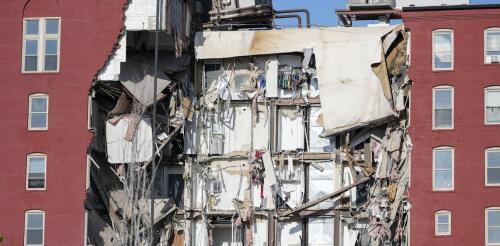Urban
As intense heat breaks records around the world, a little-reported fact offers some hope for cooling down cities: Under even the most intense periods of extreme heat, some city blocks never experience heat wave temperatures. How is this possible? Civilizations have recognized the power of cities to heat themselves up and cool themselves for centuries. City architects in ancient Rome called for narrowing streets to lessen late afternoon temperatures. Narrow streets were found to cool the air by limiting the area exposed to direct sunlight. The whitewashed architecture of the Greek Isles demonstrates another long-practiced strategy. Light-colored walls and roofs can help cool cities by reflecting incoming sunlight. Whitewashed buildings on the Greek island of Folegandros help deflect the heat rather than absorbing it. Etienne O. Dallaire via Wikimedia, CC BY In hot and humid regions of the southern...
Scenes from the Houston area looked like the aftermath of a hurricane in early May 2024 after a series of powerful storms flooded highways and neighborhoods and sent rivers over their banks north of the city. Hundreds of people had to be rescued from homes, rooftops and cars during storms, according to The Associated Press. Huntsville registered nearly 20 inches of rain from April 29 to May 4. More storm systems over the following weeks blew out windows in Houston high rises and caused more flash flooding on urban streets and already saturated ground in the region. Floods are complex events, and they are about more than just heavy rain. Each community has its own unique geography and climate that can exacerbate flooding. On top of those risks, extreme downpours are becoming more common as global temperatures rise. I work with a center at the University of Michigan that helps communities turn climate knowledge into projects that can reduce the harm of future climate disasters. F...
Four recent catastrophic building collapses and a near miss are raising concerns about the state of America’s aging buildings and questions about who, if anyone, is checking their safety. Many cities have buildings showing signs of aging and in need of repair. In New York City, where a seven-story apartment building partially collapsed in December 2023, the median building age is about 90 years, and many neighborhoods were built before 1900. As a civil engineer, I study building failures, and I have seen how crucial structural inspections and careful maintenance are – and how often the signs of trouble are ignored in the U.S. until a problem becomes a crisis. Too often, it is up to residents to call attention to the risks. A video from 2020 shows moisture stains and evidence of failed repairs at the bottom of the basement level parking garage slab in Champlain Towers South condominium before it collapsed. Fiorella Terenzi. Many...
More than 3.6 million electric cars are driving around the U.S., but if you live in an apartment, finding an available charger isn’t always easy. Grocery stores and shopping centers might have a few, but charging takes time and the spaces may be taken or inconvenient. Several states and cities, aiming to expand EV use, are now trying to lift that barrier to ownership with “right to charge” laws. Illinois’ governor signed the latest right-to-charge law in June 2023, requiring that all parking spots at new homes and multiunit dwellings be wired so they’re ready for EV chargers to be installed. Colorado, Florida, New York and other states have passed similar laws in recent years. But having wiring in place for charging is only the first step to expanding EV use. Apartment building managers, condo associations and residents are now trying to figure out how to make charging efficient, affordable and available to everyone who needs it when they need it....
The heat dome that descended upon the Pacific Northwest in late June 2021 met a population radically unprepared for it. Almost two-thirds of households earning US$50,000 or less and 70% of rented houses in Washington’s King, Pierce and Snohomish counties had no air conditioning. In Spokane, nearly one-quarter of survey respondents didn’t have in-home air conditioning, and among those who did, 1 in 5 faced significant, often financial, barriers to using it. Imagine having no way to cool your home as temperatures spiked to 108 degrees Fahrenheit (43 Celsius), and 120 F (49 C) in some places. People in urban heat islands – areas with few trees and lots of asphalt and concrete that can absorb and radiate heat – saw temperatures as much as 14 F (7.8 C) higher than that. Extreme heat disasters like this are becoming increasingly common in regions where high heat used to be rare. Blackouts during severe heat waves can also leave residents who believe they are...




